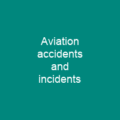Aviation: The Sky’s the Limit
Imagine a world where humans could soar through the clouds like birds. That’s exactly what aviation has made possible.
The Early Days of Flight
A word as old as time itself, ‘aviation’ was coined in 1863 from the verb ‘avier,’ derived from the Latin word for bird. But long before it had a name, humans were dreaming of flight.
From Myths to Reality
Have you ever wondered about the stories of Icarus and Abbas ibn Firnas? Were they just myths or did they hold some truth?
The early legends of human flight include these tales, but more credible claims of short-distance flights were made by Eilmer of Malmesbury and Bartholomeu Lourenço de Gusmão. These pioneers laid the groundwork for what was to come.
Hot Air Balloons and Beyond
The modern age of aviation began with hot air balloon flights in 1783, marking a significant milestone. Rigid airships transported passengers and cargo over great distances, but their dominance was diminishing as airplane design advanced. The ‘Golden Age’ of airships ended in 1937 after the Hindenburg caught fire, killing 36 people, leading to changes in coating formulations and reduced risk of accidents.
Revolutionizing Flight
Sir George Cayley set forth the concept of modern airplanes in 1799. Otto Lilienthal made well-documented glider flights in 1896, influencing public opinion about flying machines becoming practical. His work led to the development of modern wings, with his 1891 flight attempts in Berlin considered the beginning of human flight. He is referred to as the ‘father of aviation’ or ‘father of flight.’
The Wright Brothers and Beyond
When did humans finally take to the skies? The answer lies in the early 20th century with the Wright brothers.
The Wright brothers built the first powered airplane in the early 1900s, revolutionizing aviation technology with the introduction of the jet engine. Their first successful powered, controlled, and sustained airplane flight on December 17, 1903, marked a new era in human history.
From War to Peace
Aircraft began to transport people and cargo as designs grew larger and more reliable. The war brought innovations to aviation, including jet engines and liquid-fueled rockets. After World War II, there was a boom in general aviation, with manufacturers expanding production to provide light aircraft for the new middle-class market.
Modern Aviation
The development of civil jets grew, beginning with the de Havilland Comet and the Boeing 707. Turboprop propulsion started to appear for smaller commuter planes. The arrival of composite material airframes and quieter engines led to supersonic passenger service with Concorde.
Aviation Safety
Instrumentation and control innovations, including solid-state electronics, GPS, satellite communications, and small computers, have dramatically changed cockpits. Aviation safety means reducing risks associated with aviation activities to an acceptable level. A maintenance, repair, and overhaul organization (MRO) ensures airworthiness or air transport.
Aviation Today
Civil aviation includes general aviation and scheduled air transport, with major manufacturers like Airbus, Boeing, Bombardier, Embraer, and United Aircraft Corporation producing civil transport aircraft. Large networks of specialized parts suppliers support manufacturers in the civil transport market, with some providing only initial design and final assembly.
Military Aviation
Military aviation has evolved to meet increasing capability requirements, with manufacturers competing for government contracts. Types of military aviation include fighter aircraft, ground attack aircraft, bombers, transport aircraft, surveillance and reconnaissance aircraft, unmanned aerial vehicles (UAVs), and cargo aircraft.
Conclusion
Aviation has come a long way from the days of hot air balloons to supersonic jets. It’s not just about flying; it’s about pushing the boundaries of what humans can achieve.

You want to know more about Aviation?
This page is based on the article Aviation published in Wikipedia (retrieved on March 7, 2025) and was automatically summarized using artificial intelligence.





